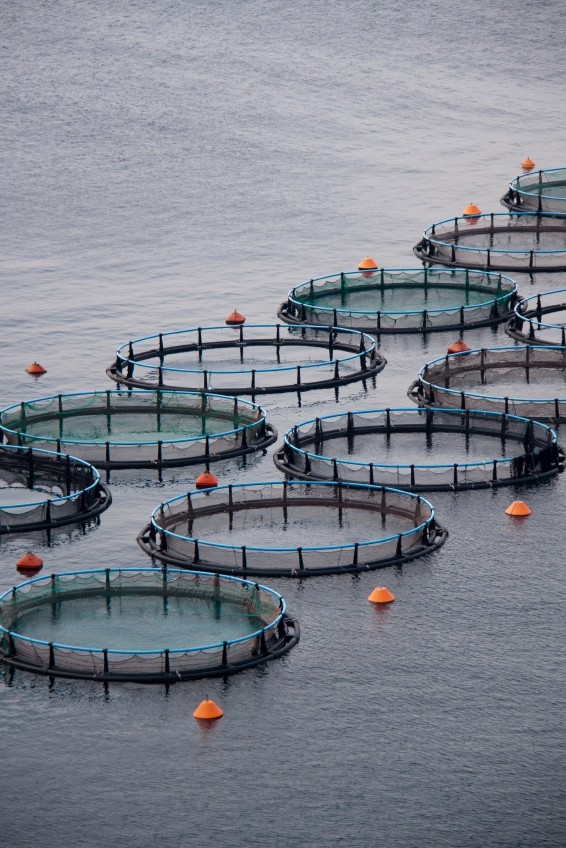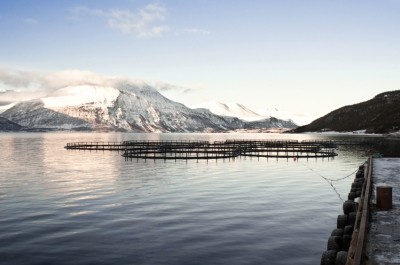Special Edition: Future Feeds
Are GM plant oils the answer to fish oil DHA and EPA replacement in aqua feed?

Aquaculture is a €50 billion global market that is growing at stable rates of 5 to 7% annually.
As demand increases worldwide for farmed fish, so does demand for fish oil – the main source of marine omega-3 in salmon diets.
While global production levels of fish oil are currently at about one million tons it is a finite resource, and the aquaculture sector has long been reducing both fish oil and fish meal inclusion levels through various means as well as exploring the use of alternative ingredients.
FeedNavigator caught up with Alex Obach, managing director at Skretting Aquaculture Research Centre (ARC), to get some insight into which new raw materials are generating interest in the world of aqua feed.
"If you look back only 15 years ago, we were using 100% fish oil in salmon feed. Today almost 70% of fish oil is being replaced by vegetable derived oils in Europe such as rapeseed oil and also by poultry oil, but in that respect, only in the Americas and Asia,” said Obach.
Microalgae potential
But fish oil’s essential nutrients, EPA and DHA, are not so easily substituted.
“A lot of investigation is underway in the area of fermentation of microalgae, but much work still needs to be done in terms of strain selection to find ones that are rich in EPA or DHA or both, along with extensive trials in various fish species.
Yields and productivity need to be improved and price per ton has a long way to go before microalgae could be placed on a competitive footing with fish oil,” said Obach.
But with patent protection on the technologies involved coming to an end, a lot more players are entering that market, he said, and this should support further optimization of the process.
“Essentially, it will have to come down to a balance between DHA and EPA composition in microalgae and yields,” he said.
GM plant oils
Genetically engineered plant oils are also a promising omega-3 fatty acid source.
“There are a huge number of initiatives underway at most of the major global biotechnology companies, including Cargill, Dow, DuPont and Monsanto, looking to transfer genes from other organisms to plants such as rapeseed or soy to instigate the elongation and desaturation process required for EPA and DHA biosynthesis,” said Obach.
Monsanto has already developed a GM soybean oil rich in the omega-3 fatty acid, stearidonic acid, (SDA) which is said to be easier to convert to EPA in humans than alpha-linolenic acid (ALA), which is found in some conventional oilseed plants.
But it and other biotech players now have to go one step beyond and produce plants genetically engineered to contain EPA and DHA directly.
“While GM plant oils are, perhaps, many years away from commercialization, considering also the lengthy registration process involved, we are very excited about the potential benefits of such technology for farmed fish feed.
Given previous trends, one would expect to see market approval and industry adoption of such GM products in the Americas in the first instance, with the likely knock on effect of that development being market stabilization and, subsequently, greater availability of fish oil for the European aquaculture sector,” said Obach.
Processed animal protein use
But he reckons the European salmon industry, to a degree, has tied itself up in knots over not allowing the use of GM raw materials in feed. “Seventy percent of compound feed in Europe is GMO but salmon feed is still GM free, for which, of course, there is a premium attached.
The market’s reluctance to use processed animal proteins in feed arising out of retailer and consumer pressure, despite the huge amount of fish imported into Europe that has been reared on such inputs, is also placing additional restrictions on growth – a policy that, long term, will have to be reviewed as it is an extremely good feed raw material for carnivorous aquaculture species such as salmon, and it is a sustainable option as well.”
With soaring fishmeal prices, the business case for new aquaculture feed targeted raw materials is much stronger than it was 15 years ago, said Obach. “So producers of algae or insect or microbial bacterial derived protein for feed, if they can generate enough tonnage volume and get the nutritional profile right, stand a greater chance of getting a hearing from fish feed producers now than in previous years.”
Enzyme development is another area of inquiry that Skretting ARC is keeping a watchful eye on. “There would seem to be a certain amount of momentum behind research looking at increasing specificity of enzymes for various fish species,” he said.
MicroBalance technology
The ARC in Stavanger has been involved in EU-wide projects over the past few years and, in addition, collaborates with research institutes in France, Spain and Italy on the nutritional needs of sea bass, sea bream and other marine species.
The Center is also involved in a longer-term collaboration with a university in Japan as well as facilities in several different countries specializing in shrimp research.
Recently announced results from field trials in Ecuador, Vietnam and Brazil using the Skretting ARC developed MicroBalance technology in shrimp feed show significant success in reducing fishmeal inclusion rates to 15%.
But 15% is not the end goal for shrimp feed, says the Center – it says it will continue to work to bring the inclusion rate further down to the 5 to 10% fishmeal it currently has in its other fish feed formulations.


!['AlgaPrime DHA is going to be a major source of growth. We have strong margins on that product and based on the initial responses we've got from the aquaculture market and, specifically, BioMar as well as some of our other partners, I expect that to ramp [up] quite rapidly.'](/var/wrbm_gb_food_pharma/storage/images/_aliases/wrbm_medium/publications/feed/feednavigator.com/article/2017/03/09/industry-demand-sees-terravia-and-bunge-ramping-up-dha-algae-production/542495-2-eng-GB/Industry-demand-sees-TerraVia-and-Bunge-ramping-up-DHA-algae-production.jpg)











